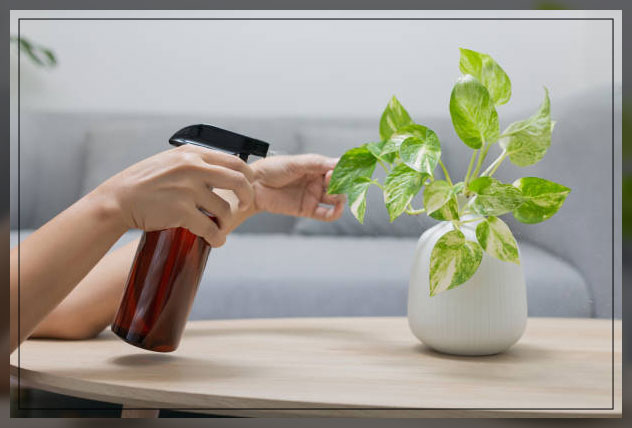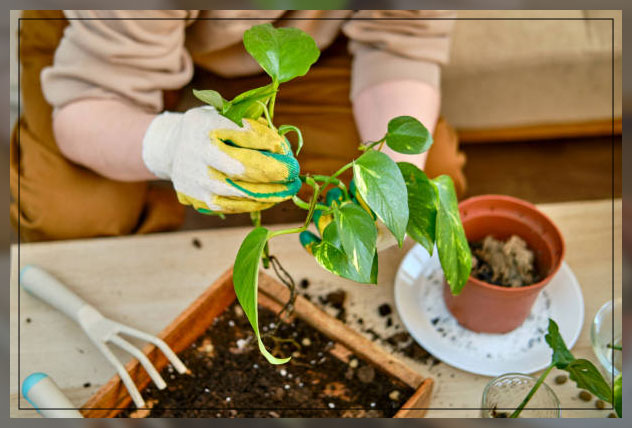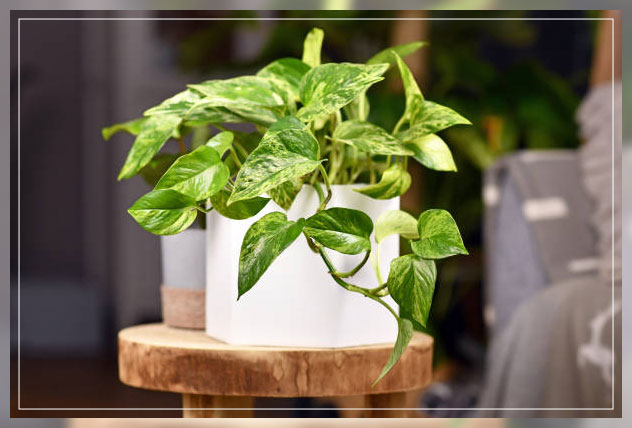If you are looking for an easy-to-grow plant, you can have Golden Pothos in your home.
Pothos or Epipremnum Aureum has a reputation for being one of the easiest houseplants that you can take care of.
Moreover, its common name comes from the genus Pothos aureus.
In addition to the classic jade green pothos, there are, however, a few different varieties you can look out for.
These include Golden Pothos which is popular for its heart-shaped green leaves with yellow variegation.
While others include lime-green Pothos Neon and the Pothos Marble Queen, featuring deeper green and white variegation.
It is important to note that Pothos is popular for indoor plants settings due to its ability to filter gaseous toxins like formaldehyde from the air.
Furthermore, it is a climber and tends to overgrow forest floors and tree trunks.
Keep on reading to learn more about Golden Pothos.
Quick Facts about Golden Pothos
Botanical name: Epipremnum aureum
Nickname: Devil’s ivy; Ceylon creeper; Golden pothos
Plant type: Evergreen vine; indoor
Air purifying?: Yes
Plant height (including pot): 30-40cm; 100-110cm; 150-160cm
Is pet/baby safe?: Toxic if consumed
Nursery pot size: 15cm; 21cm; 27cm
Golden Pothos
Golden pothos is a low-maintenance perennial evergreen house plant in the Arceaw or arum family.
One interesting fact to know about pothos is that people also call it Devil’s ivy due to its vigorous growth and its ability to bounce back to life even in the worst conditions.
Popular due to its glossy, green, or variegated leaves on cascading stems, it only grows about 6 to 8 feet as a horizontal ground cover.
However, the trailing climbing veins can grow as long as 40 feet.
Moreover, this feature makes them well-suited for hanging baskets.

Pothos is an easy-growing plant that prefers medium light, well-lit but not direct sunlight.
It has the ability to survive for long periods of time in low light.
You will need to mist the leaves regularly to keep humidity levels up and let the well-draining potting medium dry out between watering, or let the soil to dry out between waterings.
However, you should make sure to fertilize it over the month except when it is in a dormant stage.
Wipe down the leaves every so often with the help of a soft rag to remove any collected dust.
With time, the leaves will become yellow and fall off concentrating most of the leaves by the end of the stems.
Purine them back to maintain a bushy habit.
Is Pothos Poisonous?
Yes! Despite being a very popular houseplant, pothos tends to be mildly toxic.
All plants of the plants i.e. leaves, stems, and shoots contain a substance: Calcium oxalate which are microscopic crystals that act as a contact irritant.
Ingestion of pothos can lead to swelling and a burning sensation in the mouth and throat, as well as intestinal discomfort and indigestion.
Due to its toxicity, you should make sure to plant this pothos with caution around curious pets and small children.
Learn more about Poisonous Plants for Pets here.
Planting Golden Pothos
To pant golden pothos, follow the steps below:
Choose a pot with a drainage hole at the bottom as pothos plants do not like to sit in wet soil. This is because such soil can cause the roots to rot.
Plant the pothos in a general well-draining potting soil or a soilless mix.
However, if you have it on hand, you can mix it in a few handfuls of perlite or coco coir to increase the drainage capacity of the potting mix.
It is important to note that pothos tends to do well in a hanging basket to show off the vines or in a regular pot that you will place on a pot stand.
Moreover, they can also be allowed to grow up walls, though their aerial roots which they use to attach themselves to the surfaces like trees or other structures can trip plants.
Therefore, make sure to keep an eye on where their vines are growing.
Plant Care for Golden Pothos
It is important to note that you should place golden pothos in a warm location, while room temperature is ideal.
However, if you expose them to regular drafts or colder temperatures, it can affect the growth of your plant.
Place your golden pothos in bright, indirect light.
They have the ability to tolerate low light, however, will not give vigorously and can also lose some or all of the variegation in their leaves.
Moreover, water them when the soil feels dry. Pothos do not like wet soil and the leaves will begin to yellow in wet soil.

Apply a diluted liquid houseplant fertilizer once a month during spring and summer.
While making sure to cut back the vines just above a leaf to make the plant bushier.
Furthermore, the large, waxy leaves can gather dust on them. You can gently wipe them periodically.
Make sure to remove any rotted or dead stems and spotted leaves.
Learn more about Climbing Plants: 8 Best Plants and Taking Care of Them
Propagating the Plant
Golden pothos is easy to propagate and easy to care, thus making them a lovely houseplant you can share with your friends, family, and neighbors.
However, you can also keep all the offspring to yourself and turn your home into a pothos jungle.
To propagate, make sure to follow the steps below:
Locate a healthy-looking vine to take a cutting from, and make sure that the leaves are bright and healthy, and not wilting.
Make a stem cutting. The ideal stem cutting should be about 4 to 6 inches in length and have 2 to 3 leaves on it.
Moreover, cut the vine just above the root node, i.e. the spot on the vine where aerial roots grow out.
Once you have the cutting, place the cut end either in a small pot or in a clear glass of water.
You can grow pothos in water or soil however, be aware that cuttings can be finicky if you transfer them from water to soil or vice versa.
So make sure to choose one and stick with it.
Other Varieties you can Have
Some other varieties of pothos popular among house plant lovers are:
Epipremnum aureum “Marble Queen”
This one is one of the most common varieties of pothos that has smooth green leaves variegated with white and gray.
E. aureum “Golden Pothos”
Golden pothos has dark green heart-shaped leaves with white or yellow variegation.
“Jade Pothos”, E. aureum
This one tends to be all green with no variegation.
E. aureum “Neon”
Neon pothos has showy bright-green leaves.
Potting and Repotting Golden Pothos
With time, your golden pothos will become pot-bound.
When the leaves begin to droop, no matter how much or how often you water them, drooping is a sign that the roots have probably filled the pot and there is no room to grow.
There is a solution to this problem. What?

Carefully lift the plant out of its plant and check to see if this is the problem.
You may be able to see the roots growing out of the raining holes.
When the plant reaches this stage, you need to re-pot the plant into a new container.
Make sure that the container is one or two sizes larger in diameter and depth and fill it with fresh potting soil.
Common Pests and Diseases
It is important to note that golden pothos is usually pest free.
However, mealybugs can occasionally infest your plant.
To get rid of them, you can use simple insecticidal soap to control the pests.
However, the easiest method is to simply dab the insects with an alcohol-soaked cotton swab.
Moreover, you can also see spider mites on your plant.

Follow the above remedy to get rid of spider mites.
It is important to note that root rot can occur in your plant when you overwater it, or when the soil is not draining well.
As a result, you will see that the leaves will begin to turn yellow, and the growth of your plant will also be stunted.
For this, you will need to cut back on watering.
While regularly watering your plant, either mist them or water them when the soil feels dry.
Final Thoughts
Golden pothos or Devil’s ivy is a popular houseplant, easy to grow, and they are fairly tolerant of neglect. Moreover, they can even grow in environments that are not totally ideal for them. They are called Devil’s Ivy because of their ability to grow vigorously and it is nearly impossible to kill them.
These easy-going plants are a great choice for beginners and there is not much you need to think about apart from optimizing the lighting and watering conditions. However, if you encounter houseplant pests, you will need to treat them as soon as they appear with weekly sprays of a natural pesticide like neem oil and regular wipe-downs of the plant. You can also incorporate a well-draining potting mix, and add ingredients like perlite or lava rocks to increase aeration.






Leave a Reply